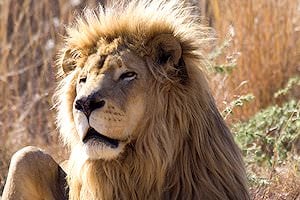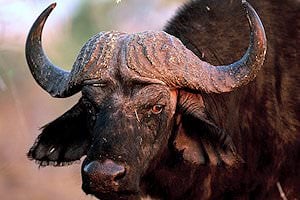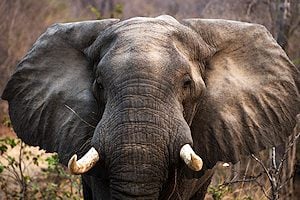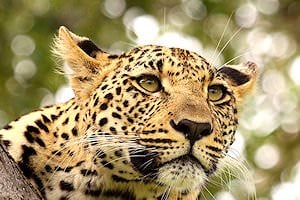- USD
- EUR
- GBP
- AUD
- CAD
- ZAR
Visitors frequently encounter these baboons on safari in Africa, from Cape Point to Kruger Park in South Africa to all the safari areas found in Namibia, Botswana, Zimbabwe, and Zambia.
Need Advice?Their fur is a pale shade of brown and covers their whole body from their tails to their heads in a very consistent fashion, except their faces, which are a brown-black color and not covered by hair. They are known for their huge canine teeth, longer than a lion's.

These baboons are distributed exclusively throughout Southern Africa. Chacma Baboons occur in Namibia's treacherous deserts and vast arid regions. They inhabit the Greater and Little Karoo and fynbos areas of the Cape, Kruger Park, and Pilanesberg. Zimbabwe, Botswana, and Zambia all have healthy populations.

Although exclusive to Southern Africa, Chacma baboons are very common, labeled as "least concern" by the IUCN red list. Their populations, population densities, and population trends all indicate and prove the status label given to this thriving species. In some areas, densities may reach numbers as high and plentiful as 3 – 4 individuals for every square kilometer of land. The population trend among local populations is stable for the majority, with only decreases in their numbers occurring in agricultural areas where farmers do not welcome their presence.

This species is very adaptive and occurs in many habitats within Southern Africa. They live in woodland, savanna, and bushveld areas of northern South Africa and fynbos parts of the Cape and the subtropical regions of KwaZulu-Natal. In Namibia, they need help finding suitable locations within a habitat to establish themselves due to their daily need for water. Predation is their main concern when deciding on a tree or shelter to live in, and the reason they are more common in some areas.

Baboons organize themselves into groups called troops. Troops vary in size, ranging from 8 individuals to over 200, but typically around 30 to 40 baboons. Males and females make up the group, usually in the ratio of 1 male for every two or even three females, with young making up nearly half of the total. Baboons are not territorial animals but have home ranges in which they stay of 400 or even 4000 ha, depending on the environment and troop state.
We recommend the following National Parks and Private Reserves for the best chances of spotting the chacma baboon on safari game drives and bush walks.

Like many other primates, they are social creatures and have several vocal ways of communicating and accompanying visual behavior. They can often be seen exploring new areas or objects near rest camps in the Kruger National Park, such as cars driving past or simply foraging in trees during the cooler hours of the day. They often socialize by grooming one another and maintaining their hygiene and health by removing ticks and fleas. Young cling to the backs or abdomens of their mothers when a troop moves from one place to another.

Females reach sexual maturity between the ages of 4 ½ to 5 years. They typically only start conceiving a year after this, when they become more desirable mates for male troop members. Males begin the process of mating by first identifying females in heat through scent or the bright color of the swollen genitals. Copulation is a quick process, with the only personal thing about it being that some females prefer particular mates to others. Gestation lasts six months, and females can mate again about a year to a half after this.

Baboons are not the largest or most ferocious creatures in Africa; thus, they are inevitably faced with the challenge and threat predators pose to their survival. Lions, leopards, hyenas, and sometimes caracals are their typical enemies, although baboons never go down without a fight. Their battles are mostly with leopards, who, like baboons, shelter in trees. You can sometimes hear these quarrels at night when males howl as a form of alarm call and hiss and scream when encountered by a leopard and faced with the task of protecting the troop.





This website uses cookies. To learn more about how we use cookies, please view our Privacy Policy. By clicking "I Accept" on this banner, you consent to the use of cookies unless you have disabled them.





